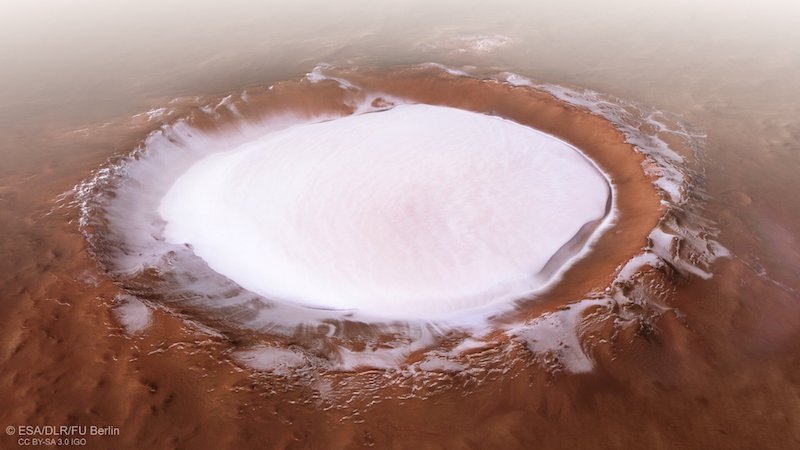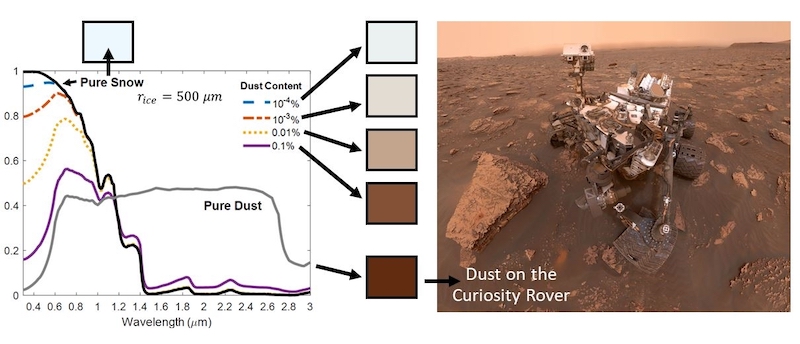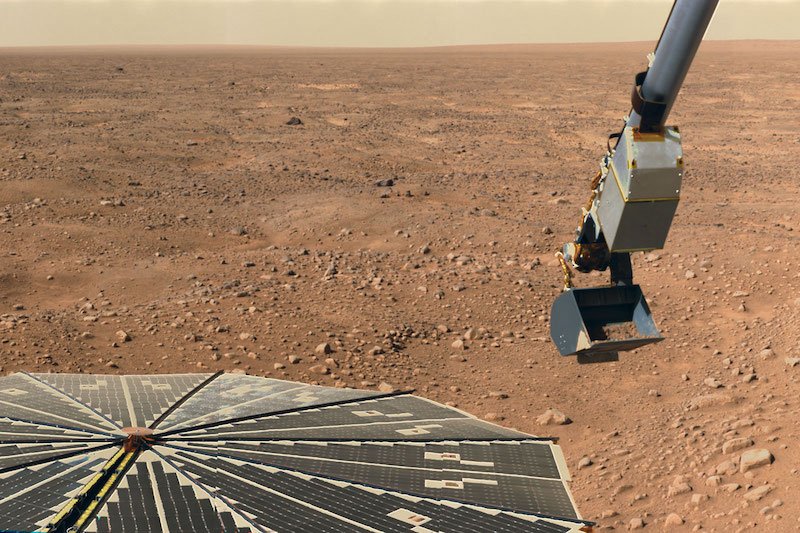
Mars ice is dusty
Mars has two things in great abundance: ice and dust. It’s not surprising, then, that Martian ice and snow tend to be dusty, more so than ice or snow on Earth. Last month (August 19, 2021), researchers from two universities in the U.S. announced a new study showing just how dusty Mars ice really is. It seems orbital spacecraft have observed most Martian ice. And it’s been a challenge to determine grain sizes and dust content of Mars ice from orbit. But researchers developed a new method to probe Mars ice. They learned it might be able to melt just a few centimeters below the surface, where the liquid water produced wouldn’t evaporate so quickly. Could that meltwater help support microbial life on Mars?
The researchers published their peer-reviewed results in JGR Planets on August 18, 2021.
Planetary scientists Aditya Khuller and Philip Christensen, both of Arizona State University, led the new study. They worked with Stephen Warren from the University of Washington.

Mars, a desert world
Mars is a vast desert, with sand and dust virtually everywhere across its globe. Huge dust storms driven by winds in the thin Martian atmosphere spread the dust all around the planet. Even rovers and landers sent to Mars from Earth get coated with thin layers of dust. Ice is also very common on Mars, not only at the polar caps, but below the surface in many locations on the planet. The new paper explained:
There is widespread evidence of water ice on Mars, with numerous locations where it is currently exposed at the surface. However, Mars is a dusty planet, and small amounts of dust are usually present within the ice. These small amounts of dust drastically alter the brightness of the ice, and therefore affect how much solar energy the ice absorbs.

Ancient snowfall
As a matter of fact, some of the ice is thought to have been formed by snowfall millions of years ago, including that in the mid-latitudes of the planet. In particular, there is the ice dug up by the Phoenix Mars Lander in the Martian arctic in 2008. That ice was formed by dusty snowfall sometime during the last million years. Khuller said:
It is widely believed that Mars has experienced multiple ice ages throughout its history, and it looks like the ice being exposed throughout the mid-latitudes of Mars is a remnant of this ancient dusty snowfall.
Notably, it still snows on Mars today, and Phoenix detected it at high altitudes. But snowflakes in Mars’ thin air evaporate before they reach the ground.
While snow may not cover the ground, ice still can be seen even on the surface. For example, one of the most picturesque Martian scenes is the ice-filled Korolev Crater, shown at the top of this post. ESA’s Mars Express orbiter captured its image in 2018. The crater is about 51 miles (82 km) across.

Could dusty Mars ice produce liquid water?
Since Mars ice tends to be so dusty, it could potentially melt a few centimeters below the surface, according to these researchers. Indeed, according to Khuller:
There is a chance that this dusty and dark ice might melt a few centimeters down. And any subsurface liquid water produced from melting will be protected from evaporating in Mars’ wispy atmosphere by the overlying blanket of ice.
To be sure, that is an exciting possibility, since liquid water, even small amounts, could potentially help sustain microscopic life.

Further study needed
At the present time, it isn’t known yet whether the ice really does melt or not, so the researchers want to analyze additional ice deposits. As Khuller noted:
We are working on developing improved computer simulations of Martian ice to study how it evolves over time, and whether it might melt to form liquid water. The results from this study will be integral to our work because knowing how dark the ice is directly influences how warm it gets.
Bottom line: Researchers at two universities in the U.S. have found that dusty ice on Mars might melt just centimeters below the surface. The liquid water produced could potentially support microscopic life.











